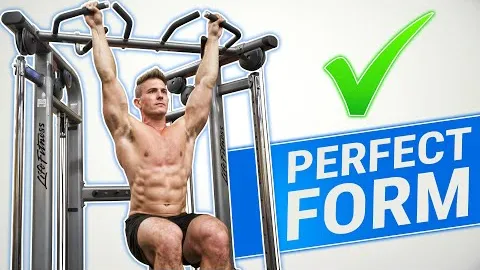
Incorporating hanging knee exercises into your workout routine is an excellent way to strengthen your core muscles and enhance your overall fitness. This exercise targets your abdominals, hip flexors, and obliques, helping to improve stability and balance while also developing strength in your lower body. In this article, we will provide you with a detailed guide to performing the hanging knee exercise correctly, ensuring you maximize the many benefits it offers.
Core Strengthening: The primary objective of the hanging knee exercise is to strengthen your core muscles. By engaging your abdominal muscles to lift your legs toward your chest, you effectively challenge and develop your core stability, leading to better posture and reduced risk of back pain.
Muscle Activation: The hanging knee exercise involves activating multiple muscle groups simultaneously, including the rectus abdominis, transverse abdominis, hip flexors, and obliques. This comprehensive activation promotes muscle balance and coordination, essential for a functional and injury-free body.
Functional Fitness: Strengthening your core through hanging knee exercises enhances your ability to perform everyday movements with greater ease and efficiency. From lifting heavy objects to walking up stairs, a strong core is crucial for maintaining stability and transferring energy between your upper and lower body.
Improved Flexibility: Executing the hanging knee exercise requires a good range of motion in your hips and lower back. Regular practice of this exercise can help improve your flexibility in these areas, reducing the risk of injuries during various physical activities.
Preparation: Find a sturdy overhead bar or pull-up bar that can support your weight. Ensure that your palms are facing away from you, and grip the bar with both hands. Hang freely without touching the ground, keeping your feet together.
Engage your Core: Before starting the movement, engage your core muscles by drawing your belly button inwards towards your spine. This activation sets a solid foundation for the exercise.
Lift your Legs: Slowly begin to lift your knees towards your chest, maintaining control and stability throughout the movement. Focus on using your abdominal muscles to bring your knees in as high as possible.
Peak Contraction: At the top of the movement, squeeze your abs and hold the position briefly, ensuring maximum contraction of your core muscles.
Return to Starting Position: Slowly lower your legs back to the starting position, maintaining control throughout the descent. Avoid swinging or using momentum to complete the movement, as this takes away from the effectiveness of the exercise.
To ensure proper execution of the hanging knee exercise and maximize its benefits, consider the following tips:
Controlled Movements: Maintain slow and controlled movements throughout the exercise. Avoid using momentum to lift and lower your legs, as this diminishes the effectiveness of the exercise and increases the risk of injury.
Breathing: Focus on your breathing throughout the movement. Inhale as you lower your legs and exhale as you lift them, syncing your breath with the movement to enhance core engagement and stability.
Progressive Overload: As you become more comfortable with the hanging knee exercise, gradually increase the difficulty by performing more repetitions or extending your legs fully. This progression will continue to challenge your core muscles and enhance your strength gains.
To ensure an effective and safe workout, be mindful of the following common mistakes when performing the hanging knee exercise:
Using Momentum: Swinging or using momentum to lift your legs reduces the engagement of your core muscles. Focus on controlled movements to reap the full benefits of this exercise.
Neglecting Core Activation: Engaging your core muscles is vital for a successful hanging knee exercise. Failure to do so can result in insufficient muscle recruitment and decreased effectiveness of the exercise.
Rushing the Movements: Perform the hanging knee exercise at a slow and controlled pace. Avoid rushing through the exercise to maintain proper form and maximize muscle engagement.
Neglecting Proper Form: Make sure to maintain proper form throughout the exercise. This includes keeping your back straight, core engaged, and avoiding excessive swinging or arching of the spine.
Incorporating the hanging knee exercise into your fitness routine is a fantastic way to strengthen your core muscles, enhance functional fitness, and improve flexibility. By understanding the correct form and technique, along with progressive overload, you can maximize the benefits of this exercise and achieve your fitness goals. So, why wait? Start incorporating hanging knee exercises into your workouts and experience the transformative results for yourself.
If you're looking for a gym, fitness club or yoga studio, you've come to the right place.
You can find information about gyms in your area. Browse catalog of gyms and find gyms with classes which are you looking for.
On gym page you can find simple information like address, phone or website. You can find list of available classes. You can check availability of personal training or small group classes. On place page you can also see information about open hours.
You can find gyms near you with amenities, courts, studios and equipments.
Use our map to find gym at your city or district.
In Gym Navigator you can find list of exercises with movies for many body parts.
You can browse exercises catalog and find exercises the best of you.
You can also find exercises grouped into workout plans, which you can use to improve you body. Each routine show you exercises one by one and give you possibility to count you progress and count down rest time.